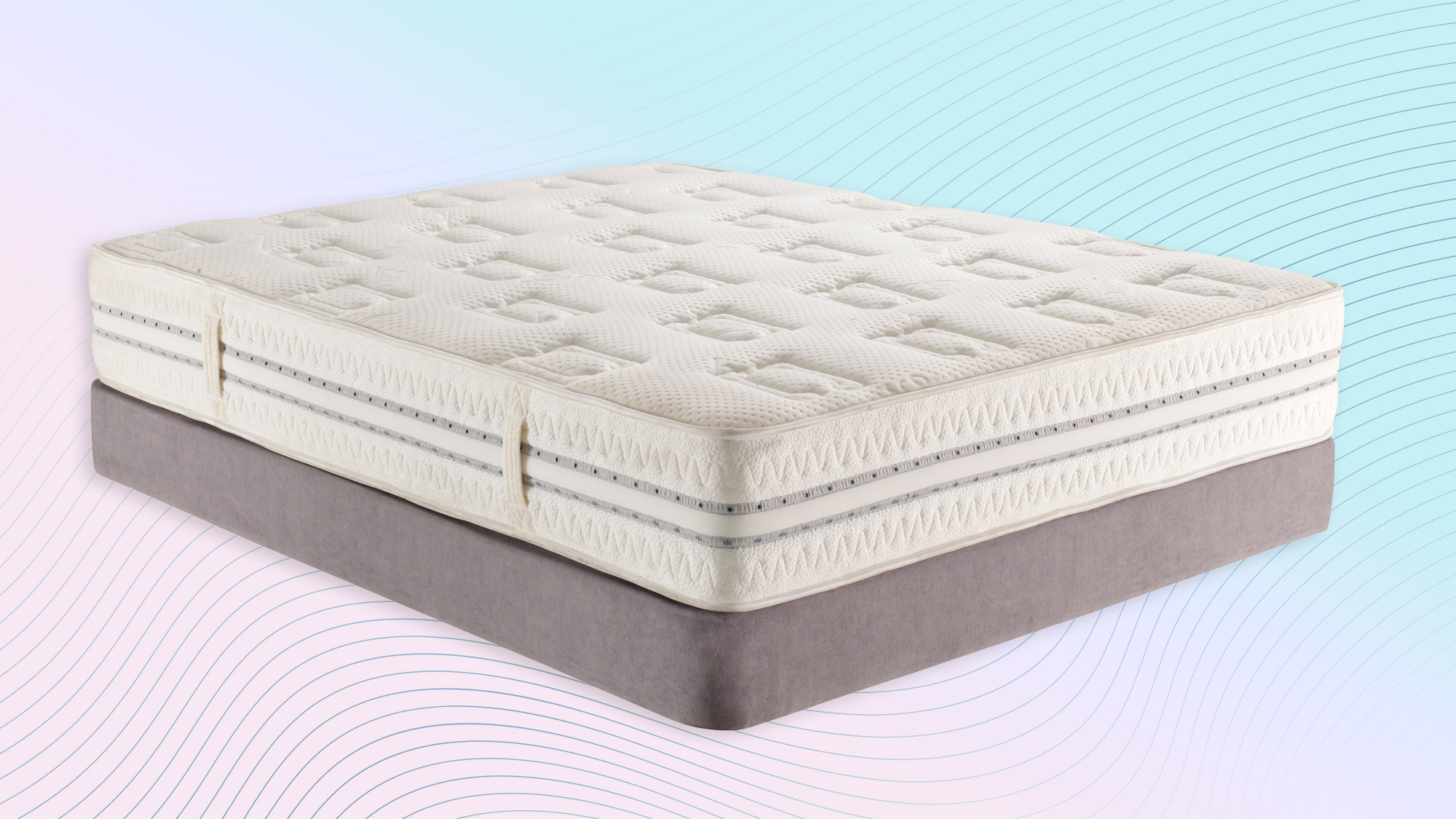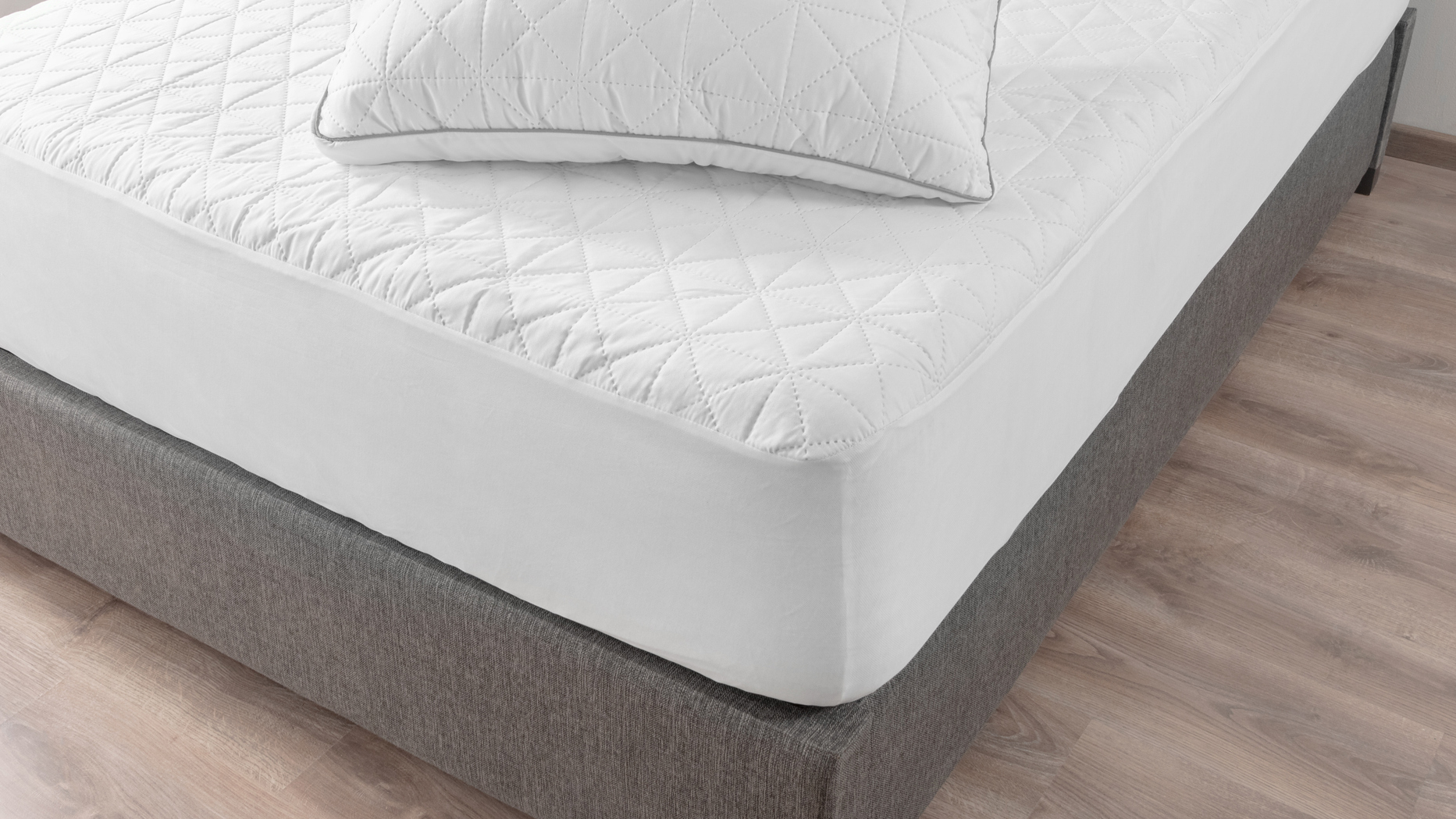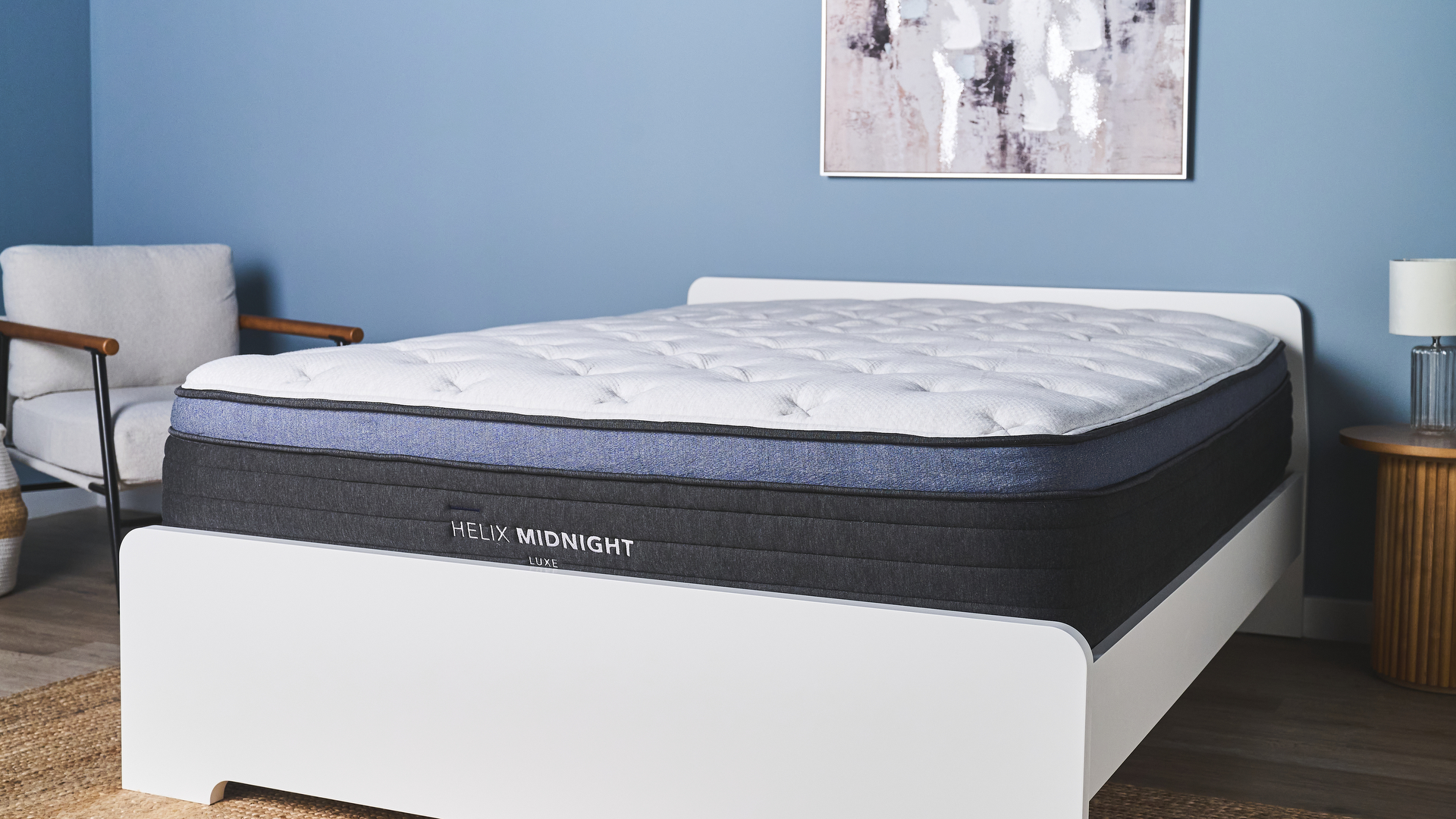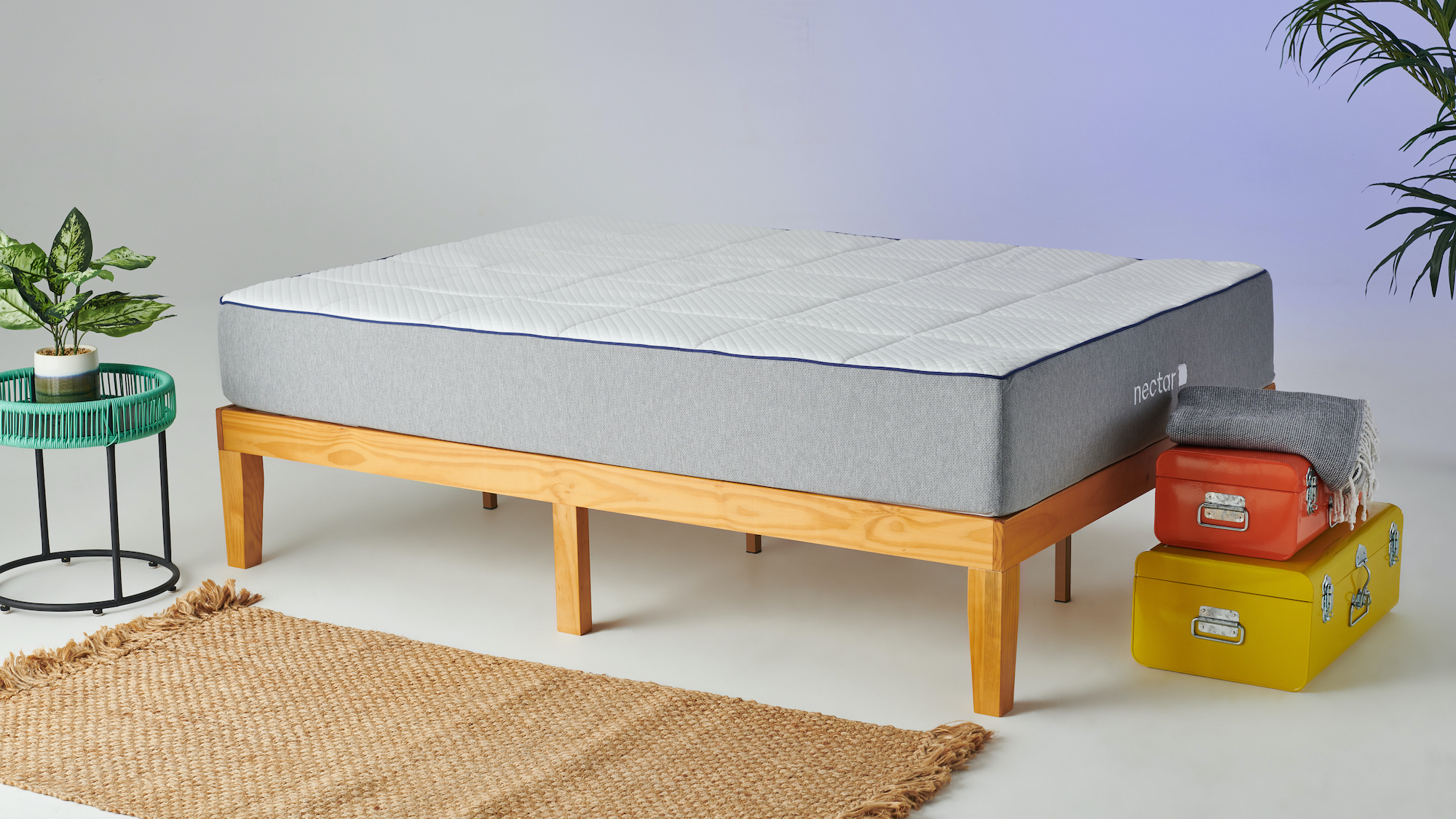Do mattresses need box springs?
What you need to know about using a box spring with a hybrid, memory foam, latex or innerspring mattress

Once upon a time you couldn't purchase a mattress without a box spring. Today, box springs are all but obsolete, reserved only for a small niche of users. But if you’re of a certain age you might be wondering if mattresses still need box springs today. The short answer: not really.
A box spring is an upholstered wooden or metal frame with coils, although modern interpretations may feature a metal grid. During the last century, box springs were essential because most people slept on innerspring mattresses that sagged and wore out without extra support. Today, the best mattresses on the market are dominated by all-foam and hybrid models, which are taller and more durable — and don’t need a box spring.
You may feel compelled to buck the trend by using a box spring to create a cozier, more luxurious bed, but as you’ll discover below, that’s not always the best idea. Read on to find out why using a box spring might do as much harm as placing your mattress on the floor. If you're shopping for a new mattress, now's a great time as the Presidents' Day mattress sales will be kicking off soon.
Do all mattresses need a box spring?
- Most modern mattresses don’t require a box spring…
- …but some innerspring mattresses do need them
- To know for sure, read the mattress warranty
Most modern mattresses don’t need a box spring because they’re designed to absorb shock, promote airflow, and offer sufficient support. Even innerspring mattresses can do without one if they’re thick and sturdy enough.
However, some manufacturers suggest using a box spring to give the mattress a solid foundation and help it last longer. This is common for innerspring hotel mattresses, as a box spring boosts support and comfort while adding height for a more luxurious look.

The best way to know if your mattress needs a box spring is to read the warranty. Using the wrong type of foundation — or a box spring where it’s not recommended — could void your mattress warranty altogether.
Pros and cons of box springs
- Box springs can boost support, airflow, and height
- Modern box springs are stylish and blend well with decor
- However, box springs aren't usable with most mattresses now
When paired with the right type of mattress, a box spring increases airflow and support while reducing impact and motion transfer, ultimately helping the mattress last longer.
Get instant access to breaking news, the hottest reviews, great deals and helpful tips.
It also adds an average of nine inches of height, giving your bed a taller, more inviting look. Today’s box springs usually come wrapped in fabric to blend with your decor, or you can dress up a plain box spring with a bed skirt.
On the other hand, box springs aren’t as essential as they once were. The best mattresses in a box are built to be sturdy and shock-absorbent so a box spring is redundant. That said, you'll need a base that’s better equipped to withstand the weight of a modern mattress, such as a platform bed or a foundation.
Mattress types you can use with a box spring
The only mattress type we generally recommend pairing with a box spring is an innerspring mattress, but even that's conditional. A thin innerspring mattress will benefit from the added support of a box spring, helping reduce wear and movement while increasing the bed’s overall height.
For thicker innerspring mattresses — which will resemble the best hybrid mattresses — a box spring is optional. For example, you can use a box spring with most of Saatva’s innerspring models if it meets certain criteria, although the brand suggests using one of its foundations instead.
Meanwhile, hotel mattresses like the Westin Heavenly Bed include a box spring for a more luxurious appearance.

Mattress types you can’t use with a box spring
If you have a memory foam mattress, a latex mattress, or a hybrid mattress, a box spring isn’t necessary or even allowed. These mattress types are generally thicker and sturdier than the innerspring models of yesteryear.
Always follow the manufacturer’s guidelines about which type of base to use, as adding a box spring could void your warranty. Tempur-Pedic makes some of the best memory foam mattresses in the world, and using a box spring with any of its beds will render your warranty worthless.
If you already own a box spring, browse the brand’s FAQs to see if it’s compatible with your potential mattress, and find out which bases the manufacturer recommends. Some mattress brands offer white glove delivery, which may include the option to remove your old box spring and mattress.
Alternative bed frames to replace a box spring
There are several box spring alternatives available for all-foam and hybrid mattresses. Whether you’re aiming for a certain budget, a modern look, or a tailored sleep experience, here are three options to consider:
Platform bed
A platform bed sits low to the ground and has a slatted or solid base. Some platform beds blend form with function by adding shelves or drawers. Prices range from budget-friendly to high-end, so it’s easy to find something within your desired budget.
However, the low profile of a platform bed may be inconvenient for sleepers with mobility issues, and it doesn’t offer as much give as a box spring so your mattress might feel firmer than you'd like.
Adjustable bed
An adjustable bed is fitted with a motor (or motors) so you can raise and lower your head and/or feet. This customizable comfort is helpful for pain relief, increased circulation, and reduced snoring. Higher-end models add features such as massage, under-bed lighting, and built-in USB ports.
However, they’re typically pricier than other bed frames, and your mattress must be flexible and durable enough to conform to different positions.

Foundation
A foundation is a wooden frame with slats or a solid board in the center. Depending on the design, it can double as a bed base, but it's usually paired with a separate frame. A foundation works with most mattress types and provides many of the same benefits as a box spring.
Similar to a platform bed, a foundation imparts a firmer bed feel and is available in a variety of styles and prices. However, a foundation can be heavy to move so it’s impractical if you like to rearrange your space often.
Box spring FAQs
How much do box springs cost?
For a queen-size box spring, the average price ranges from $100 to $250, although you’ll find some options outside of that bracket, too. You can purchase a box spring on its own or with a mattress and/or bed frame, which will obviously cost more upfront.
How often should you replace a box spring?
A box spring will usually last as long as your mattress, about 8 to 10 years. However, if there’s obvious signs of wear such as creaking and sagging, you’ll have to replace your box spring much sooner. (Relative to other types of bed frames, box springs have the lowest lifespan.)
Can I recycle my box spring?
The rules for disposing a box spring vary by location so you’ll need to refer to the laws in your area to avoid citations and fines. That said, you may be able to take your box spring to a local recycling center — or you can get creative and search for ways to repurpose your box spring for your home or garden.
Which mattress brands remove old box springs?
Mattress white glove delivery is a premium service that includes setting up your new mattress — and in some cases, removing your old mattress, foundation, and box spring, as well. Brands like Saatva, Stearns & Foster, and GhostBed offer box spring removal with their white glove delivery.
If you’d like your box spring removed, you’ll need to indicate that ahead of time. Some brands may charge an additional fee for removal, and others may not offer removal at all.

Based in Philadelphia, writer and editor Alison Barretta has been sharing buying advice and retail news for over 15 years. Since 2020 she's been helping Tom's Guide expand its robust library of sleep content by researching the latest trends, speaking with renowned experts, and going behind the scenes at Saatva, Casper, Sleep Number, Tempur-Pedic, and 3Z Brands. Alison has reviewed everything from budget mattresses to immersive luxury smart beds that automatically adjust to your every move. When she isn't reviewing mattresses or searching for great deals to save you money, Alison can be found practicing yoga and martial arts, experimenting with recipes, getting too invested in the Philadelphia Flyers, and snoozing with her cat / assistant mattress tester Alex.
